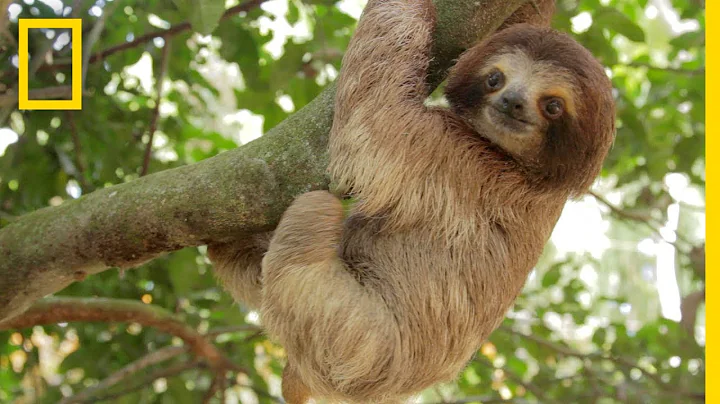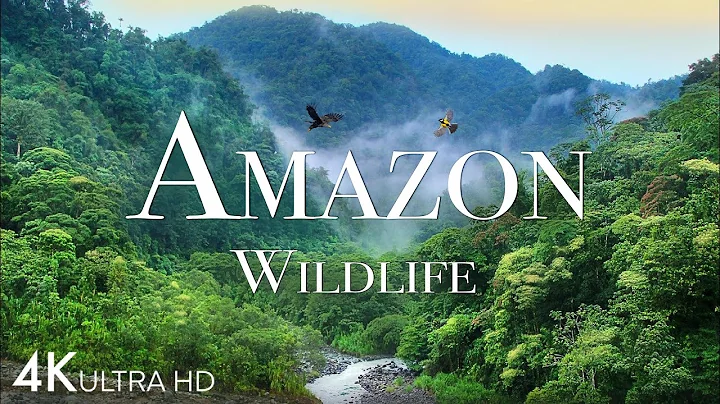The Amazon rainforest is known as the lungs of the earth. It is the largest tropical rainforest in the world. The Amazon River flows through the rainforest, bringing more creatures to the already colorful tropical rainforest, such as giant giants tens of meters high. Trees and anacondas more than ten meters long, these behemoths form part of the Amazon rainforest, and also bring more mystery to the Amazon rainforest.
However, an animal that originally lived in the vast ocean has appeared in the Amazon rainforest, which has aroused the attention and speculation of countless people. What is going on?

What happened
This bizarre animal that appeared in the Amazon rainforest is the humpback whale . The discovery of this humpback whale is also full of accidents and coincidences. In February 2019, flocks of vultures were hovering over the Brazilian Amazon rainforest. As a scavenger, the vulture’s main food is various decaying animals. There are so many groups. The vulture means that the dead animal was very large, which attracted the attention of the staff of the local Animal Protection Association. Soon, two members of the local animal protection society drove a small boat and followed the circling vultures to the vicinity of where they were feeding.

Arriving near the feeding site, they fixed the boat. As soon as they got off the boat, they smelled a pungent odor that permeated the nearby air. They could find the location of the body without following the vultures. Following the scent they reached the location of the carcass, which was a huge thing, surprising the staff at the Humane Society because the carcass of the animal was that of a humpback whale. How did , an ocean overlord that originally lived in the ocean, reach the Amazon rainforest? And why did he die here?

Humpback whale
Humpback whale, its name "Humpback" comes from Japanese "Humpback", which means "Pipa". It is named after the fins on its back that are shaped like a pipa. It is a tropical warm sea creature. Cetaceans. This whale has a huge head and is a veritable behemoth. Generally, the body length of an adult humpback whale is between and 15 meters. The longest one can reach 18 meters long and weigh between 25 and 30 tons.
At the same time, it is also a relatively mild-tempered whale among whales. It likes to play in pairs when it is active, and has a migratory habit. It migrates back and forth in the north-south direction regularly every year. It hunts in cold waters in summer and breeds in warm waters in winter. , mainly distributed in the middle and low latitudes of various oceans.
Moreover, the humpback whale’s feeding is relatively “casual”. It mainly feeds on krill, a small crustacean with a body length of less than 1 cm. When eating, it directly opens its huge mouth, like a black hole. They swallow sea water together with small fish and shrimps, and sometimes they can even eat continuously for more than 18 hours.

As a kind of marine creature , the humpback whale is found in all major oceans. From the ice edge of Antarctica to the vast ocean at 65 degrees north latitude, it has its footprints. It needs to travel up to 25,000 kilometers every year. Migration makes it one of the animals with the longest migration distances among mammals.
However, areas like the Amazon rainforest will not be a place for it to roam in any case, because the environment of the Amazon rainforest is simply not suitable for its survival. So, what is the Amazon rainforest really like?

Amazon Rainforest
The Amazon Rainforest is located in the Amazon Plain of South America. It covers an area of 7 million square kilometers. The rainforest spans 9 countries in South America. At the same time, the area of the Amazon Rainforest accounts for 80% of the total area of the global rainforest. It is also The most species-rich rainforest in the world. In the three years from 2010 to 2013 alone, the expedition team into the Amazon rainforest discovered 441 new species, worthy of the title of "World's Kingdom of Animals and Plants".
In the Amazon rainforest, there are millions of species of plants, insects, birds and other biological resources. The plants include cocobolo , Brazil fruit and rubber tree . The representative animals include jaguar, manatee , Giant pythons, etc., but humpback whales, large mammals that originally lived in the ocean, are definitely not native to the Amazon rainforest. So why did it come to the Amazon rainforest?

How did the humpback whale come about?
Animal Protection Society staff member Ninja Stinky took measurements of the dead and decayed humpback whale. They found that the body length of this humpback whale is about 7.9 meters, which is less than half the length of an adult humpback whale. Therefore, it is a young whale about years old.
After initially collecting information about the humpback whale, the staff located the location of the humpback whale and reported it to the Brazilian Marine Life Conservation Organization. Subsequently, staff from the Brazilian Marine Life Conservation Organization arrived at the scene, and first they began to analyze the cause of the death of the humpback whale.

After preliminary inspection and analysis of the surface of the humpback whale, it was found that there were no scars on its outer surface. At the same time, combined with the location where it was found, the possibility of humans killing it can be basically ruled out. Then, the cause of his death is most likely due to the lack of sufficient water sources for rehydration due to stranding, which eventually led to the body's lack of water and dying of thirst .
After the staff initially speculated on the cause of his death, they began to fall into a new puzzle. How did such a huge humpback whale reach the depths of the Amazon rainforest? Could it be that it flew here?

Before studying how humpback whales reach the depths of the tropical rainforest, we must first understand the habits of humpback whales.
First of all, as a deep-sea mammal, humpback whales generally do not swim in shallow seas, let alone go to shallow areas. At the same time, for this kind of young humpback whales, they are usually accompanied by adult humpback whales and generally do not move alone.
Furthermore, the water temperature in the Amazon rainforest area in February is not very high. It is said that humpback whales at this time should swim back to areas with higher water temperatures to breed, rather than going deep into the Amazon rainforest.
Based on the above three points, the staff made the following inferences about this humpback whale.

Personnel from the Brazilian Marine Life Conservation Organization believe that one of the reasons why the humpback whale arrived here is that it was attacked by a foreign object, causing it to become separated from the adult humpback whale. Although the humpback whale is a large whale, it is not that big among whales. Sometimes it is preyed on by other creatures, such as the killer whale , which has a cruel temperament and extraordinary predatory ability. Strong creatures may actively attack humpback whales, causing the adult humpback whales to die or become separated from the adult humpback whales. Then the juvenile humpback whales lose the protection and guidance of the adult humpback whales, and lose the ability to identify directions. Ability, accidentally came to the edge of the Amazon rainforest.

Another reason is the rise and fall of the tide. Although the humpback whale was found deep in the Amazon rainforest, there is a river more than ten meters away from the place where it died. The water level of this river seems to be shallow at this time, but between February and March every year , due to the action of the Atlantic Ocean currents, rivers in the Amazon rainforest will have varying degrees of high tides. After high tides, the depth of the river water can reach a maximum depth of about 4 meters, which is enough for a humpback whale to swim. The staff of
speculated that this humpback whale accidentally came to the mouth of the Amazon rainforest and swam upstream to the depths of the tropical rainforest with the rising tide. However, due to the receding of the river, it lost the opportunity to return to the ocean and eventually He died due to lack of water and exposure, losing his life.

The current situation of humpback whales
According to 2018 statistics, the global number of humpback whales is approximately 84,000 . However, humpback whales have suffered many survival threats in recent years.
The first is the threat of stranding. In October 2010, more than 80 humpback whales were stranded on a beach in New Zealand . After the protection and efforts of many people, more than 40 humpback whales died in the end. New Zealand is an area with a high incidence of humpback whale strandings. According to statistics since 1840, more than 5,000 humpback whales have been stranded in the country's waters.

The second is the threat of collision. Currently, more and more ships are sailing in the ocean, which also increases the possibility of collisions between humpback whales and ships. From 1975 to 2011, a total of 68 incidents of ship collisions with humpback whales were reported around the world. , this kind of ship collision is extremely threatening to the lives of humpback whales.
Furthermore, it is a large-scale commercial killing. Japan has been hunting humpback whales on a large scale in the name of scientific research. In 2007, more than 1,000 humpback whales were killed in one year, seriously affecting the security of the humpback whale population.

At present, our country has included humpback whales in the "List of Key Nationally Protected Wild Animals in China" as a level one. Our country no longer allows the hunting of humpback whales. Although the global number of humpback whales is currently relatively considerable, We must not hunt them, but must strengthen their protection and protect the safety of the entire population.
Author: Yaya Proofreading Editor: W





















